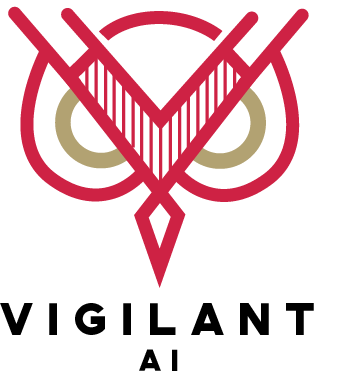The role of the auditor is under increased scrutiny. Audits have always been important tools for stakeholders, regulators, and the wider public to verify financial statements. But with numerous audit failures and record fines levied against audit firms across the industry, it’s important to understand the challenges facing auditors today that have led to this scrutiny.
Some recent audit failures have been caused by a lack of completeness in review or a failure to remain independent through the audit process. As the pressure to get it right continues to grow, auditors will need new approaches that overcome the limitations of the traditional audit methodology while also meeting the need to decrease labour costs
This article will highlight the five key challenges auditors face when collecting and analyzing corporate financial data.
1) The Overwhelming Volume of Data
The rise of big data has transformed the way we do business. Across industries, the creation of and access to more data has enabled companies to measure and optimize business processes, strengthen strategic decision-making, and capture new revenue sources.
Big data similarly has the potential to transform the audit process. Used effectively, data empowers auditors to ask questions, exercise professional skepticism, and verify the legitimacy of transactions in a way not possible before.
Unfortunately, for many auditors, the volume and diversity of data available to them quickly becomes overwhelming. The completeness and accuracy of the data cannot be easily proven, compatibility between systems creates additional delays, and formatting issues make it expensive to manipulate data for manual testing.
Faced with a barrage of accounting entries and business process documentation, auditors end up trapped in a cycle of seemingly endless data collection and review, tying up resources for routine confirmations instead of probing areas of higher risk more deeply.
2) Traditional Audit Timelines
Clients, of course, want audits completed quickly and with minimal disruption to their business. Auditors, on the other hand, need to balance completeness with their client’s tight timelines.
Most audits are set to be completed within one to three months at the end of the corporate year. To meet these deadlines, auditors typically rely on a risk-driven sampling methodology. The increased use of AI tools in sample selection, such as MindBridge and Caseware, has shifted risk identification to 100 percent data review, but this has not yet been enhanced to automatically link the available business process documentation to speed the confirmation process.
Further, the speed at which the auditor can provide their report depends on the client’s speed of collecting the appropriate business process documentation for the areas of risk identified. If the right documentation cannot be discovered in a timely manner, it cannot be reviewed, creating a blind spot in the audit and inviting risk.
Download Addressing Key Challenges in Modern Auditing
3) Remote Work Trends
The COVID-19 pandemic accelerated the existing trend toward remote work. On the one hand, this forced companies to rapidly digitize their business and audit processes. In fact, a recent Deloitte survey found that 95 percent of companies increased digitalization of the overall audit process because of the pandemic.
However, while this did enable audit continuity, it didn’t necessarily lead to greater efficiency in the audit process. The same survey found that 54 percent of respondents said the pandemic reduced audit efficiency, with companies ranking inadequate technology infrastructure as the number one challenge of a digital audit process.
4) Increased Business Complexity
Today’s businesses are more complex than ever before. High-volume, global companies have more transactions spread across multiple jurisdictions. Business is conducted in multiple languages, while global supply chains mean companies engage with numerous suppliers, customers, contractors, and other partners.
Further, many companies structure themselves using multiple subsidiaries, holding companies, offices, and business units depending on their strategic objectives.
The mere presence of complexity does not, in itself, suggest that a business has something to hide, and most of the structures are entirely legitimate. But they add further complexity to the audit process and make collecting, reviewing, and using supporting documentation even more difficult for the auditor.
5) Regulatory and Media Focus on Fraud
Auditors are the gatekeepers to supporting high-quality financial reporting. As part of their role, they have a responsibility to consider fraud and obtain reasonable assurance about whether financial statements are free from material misstatements caused by either fraud or error.
Unfortunately for the audit industry, some very large audit failures and the resulting regulatory fines have drawn attention to the limits of the effectiveness of the current audit tools and methodologies. This is putting more media pressure on auditors to detect and identify critical risks during the audit.
With greater public scrutiny, regulators have responded by increasing the requirements for auditors, increasing their costs and the consequences for making any errors. Any perceived mistake or lack of oversight can have serious and long-term consequences in the form of reputational damage, lost clients, fines, and lawsuits.
Recent high-profile examples, such as the collapse of FTX or the lawsuit against the auditors of a British construction giant, demonstrate how important it is for auditors to conduct a complete and independent audit using all the data available to them.
Overcoming the Challenges With a Holistic Approach to Financial Data Management for Auditors
These challenges – the rapid growth of data, tight deadlines, the rise of remote work, increasingly complex businesses, and a public focus on audit failures and frauds – point to the need for auditors to find a way to collect and use more business process documentation throughout the audit process.
Even before an audit begins, auditors can identify and collect the correct business process documentation in the areas of risk identified during sample selection. The business process documentation can then be cross-correlated to every accounting entry selected for review, allowing the auditor to speed up confirmation of those entries and more rapidly pinpoint the discrepancies that can cause audit failure.
By increasing the speed at which an auditor can review business process documents, audit firms can increase their labour efficiency and perform more confirmations, resulting in a more comprehensive and independent audit that reduces their overall risk.



Recent Comments